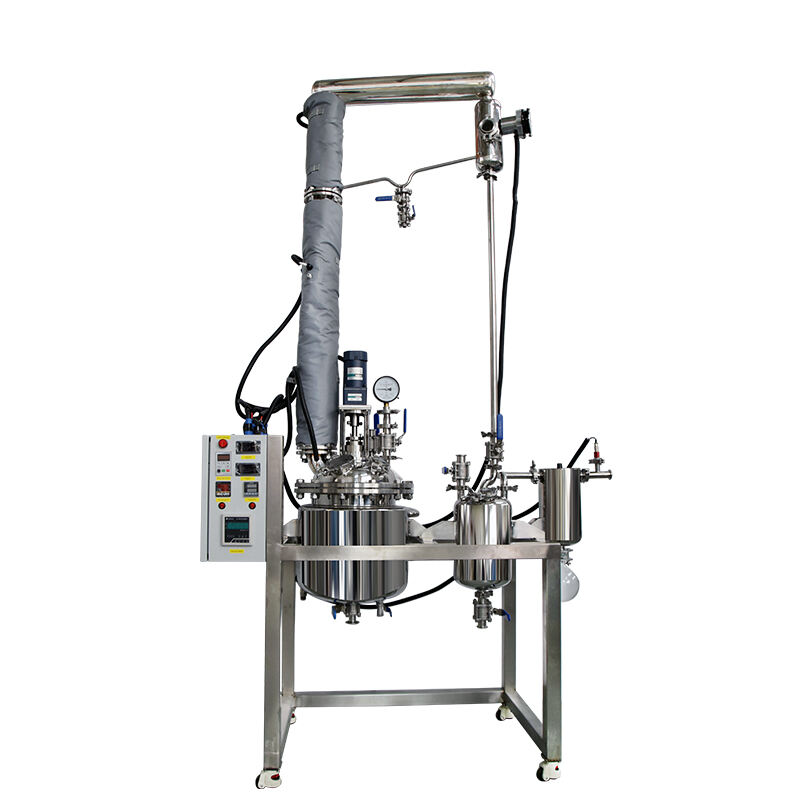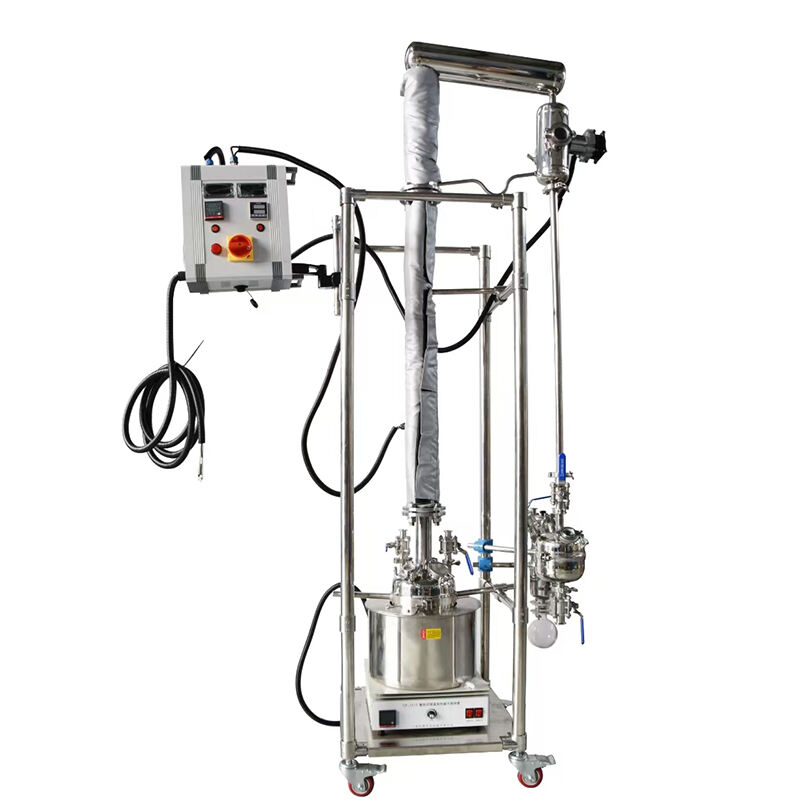Understanding the Precision of Modern Separation Technology
In the world of chemical processing and purification, fractional distillation equipment stands as a cornerstone of precision separation technology. This sophisticated apparatus enables the separation of liquid mixtures into their pure components with remarkable accuracy, fundamentally transforming how industries approach material purification. The equipment's ability to achieve narrow boiling point fractions has revolutionized everything from petroleum refining to pharmaceutical manufacturing.
Modern fractional distillation equipment combines innovative engineering with time-tested principles of thermodynamics to deliver unprecedented separation efficiency. By carefully controlling temperature gradients and utilizing specialized column designs, these systems can separate compounds with boiling points that differ by mere fractions of a degree – a capability that was once thought impossible.
Core Components of Advanced Fractional Distillation Systems
The Critical Role of Fractionating Columns
At the heart of fractional distillation equipment lies the fractionating column, a masterpiece of engineering that facilitates the separation process. These columns are packed with specialized materials or fitted with trays that increase the surface area for vapor-liquid contact. The enhanced surface area creates multiple theoretical plates, each acting as a mini-distillation stage, allowing for more precise separation of components.
The design of modern fractionating columns incorporates advanced packing materials, from structured packings to random packings, each optimized for specific applications. These materials promote efficient mass transfer while minimizing pressure drop, ensuring optimal separation performance even with challenging mixtures.

Temperature Control and Monitoring Systems
Precise temperature control is essential for achieving narrow boiling point fractions. Modern fractional distillation equipment employs sophisticated temperature monitoring systems with multiple sensors positioned throughout the column. These systems provide real-time data and allow for minute adjustments to maintain optimal separation conditions.
Advanced digital controllers and automated systems help maintain temperature stability within fractions of a degree, ensuring consistent separation quality. This level of control is particularly crucial when dealing with temperature-sensitive materials or when precise fraction cuts are required.
Engineering Principles Behind Narrow Fraction Separation
Reflux Ratio Optimization
The reflux ratio in fractional distillation equipment plays a pivotal role in achieving narrow boiling point fractions. By carefully controlling the amount of condensed vapor returned to the column, operators can fine-tune the separation process. Higher reflux ratios generally result in better separation but must be balanced against energy efficiency and production requirements.
Modern systems incorporate advanced reflux control mechanisms that automatically adjust the ratio based on real-time monitoring of separation quality. This dynamic control ensures optimal performance while maintaining energy efficiency.
Pressure Management Systems
Pressure control within fractional distillation equipment directly influences separation efficiency. State-of-the-art pressure management systems maintain precise control over column pressure, allowing for manipulation of component boiling points and optimization of separation conditions.
Vacuum operation capabilities extend the equipment's versatility, enabling the separation of heat-sensitive materials and high-boiling compounds at lower temperatures. This feature is particularly valuable in pharmaceutical and specialty chemical applications.
Advanced Features for Enhanced Separation Efficiency
Integrated Heat Exchange Systems
Modern fractional distillation equipment incorporates sophisticated heat exchange networks that maximize energy efficiency while maintaining precise temperature control. These systems recover heat from product streams to preheat feed materials, reducing energy consumption and improving overall process economics.
The integration of smart heat exchange controls allows for dynamic adjustment of heating and cooling rates, ensuring optimal separation performance even during feed composition variations or environmental changes.
Real-time Analytics and Process Control
The incorporation of advanced analytical instruments and process control systems has transformed the operation of fractional distillation equipment. Real-time composition analysis, combined with automated control systems, enables immediate response to process variations, ensuring consistent product quality.
Machine learning algorithms and predictive maintenance systems help optimize operation parameters and prevent potential issues before they impact separation quality. This proactive approach maximizes equipment uptime and maintains consistent separation performance.
Operational Considerations for Optimal Performance
Maintenance and Monitoring Protocols
Regular maintenance of fractional distillation equipment is crucial for maintaining narrow boiling point separation capability. This includes inspection of packing materials, cleaning of heat exchange surfaces, and calibration of control instruments. A well-maintained system ensures consistent separation efficiency and extends equipment life.
Modern equipment often includes built-in diagnostic tools that help identify maintenance needs before they become critical issues. This predictive approach to maintenance helps prevent unexpected downtime and maintains optimal separation performance.
Operating Parameter Optimization
Successful operation of fractional distillation equipment requires careful optimization of multiple parameters, including feed rate, reflux ratio, and heat input. Advanced control systems help operators maintain these parameters within optimal ranges, ensuring consistent separation quality.
The implementation of digital twins and simulation tools allows operators to test different operating conditions virtually, optimizing parameters without risking actual production quality.
Frequently Asked Questions
What factors most influence the efficiency of fractional distillation equipment?
The primary factors affecting efficiency include column design and packing material selection, reflux ratio control, temperature and pressure management, and overall system maintenance. The integration of these elements, combined with proper operating procedures, determines the equipment's ability to achieve narrow boiling point fractions.
How does modern fractional distillation equipment handle varying feed compositions?
Modern equipment utilizes advanced control systems and real-time analytics to automatically adjust operating parameters in response to feed composition changes. This adaptive control ensures consistent separation quality despite variations in input material.
What maintenance practices are essential for maintaining separation efficiency?
Regular inspection and cleaning of column internals, calibration of control instruments, and monitoring of heat exchanger performance are crucial. Implementing a preventive maintenance schedule and utilizing predictive maintenance tools helps ensure optimal equipment performance and longevity.
Table of Contents
- Understanding the Precision of Modern Separation Technology
- Core Components of Advanced Fractional Distillation Systems
- Engineering Principles Behind Narrow Fraction Separation
- Advanced Features for Enhanced Separation Efficiency
- Operational Considerations for Optimal Performance
- Frequently Asked Questions

